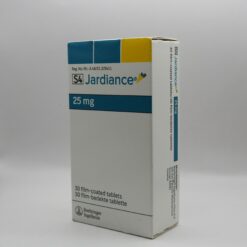Forxiga (10mg tablet x 30)
$104.02
Forxiga is a medication available in the form of a 10mg tablet. Its active ingredient is dapagliflozin. Forxiga belongs to a class of drugs known as sodium-glucose co-transporter 2 (SGLT2) inhibitors and is primarily used to treat type 2 diabetes. It works by reducing the reabsorption of glucose by the kidneys, leading to increased excretion of glucose through urine and lower blood sugar levels.
Forxiga is often prescribed as part of a comprehensive treatment plan that includes diet, exercise, and possibly other antidiabetic medications. It is important to follow the dosage instructions provided by a healthcare professional and maintain regular check-ups to monitor the effectiveness and safety of the medication. Additionally, patients should be aware of possible side effects and should consult their doctor if they experience any concerning symptoms.





